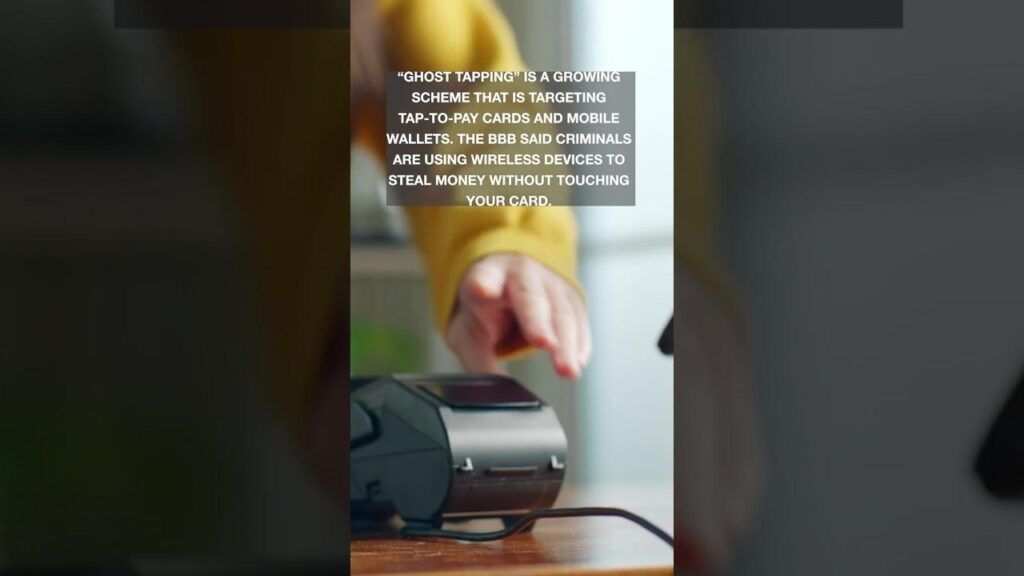In an era where convenience often meets cutting-edge technology, tap-to-pay has become a seamless part of everyday transactions-effortless, quick, and contactless. But lurking beneath this modern marvel is a hidden threat known as “Ghost Tapping,” a crafty exploitation of tap-to-pay systems designed to siphon your money without your knowledge. As digital wallets and contactless cards grow in popularity, understanding how Ghost Tapping works and how to protect yourself has never been more crucial. ABC7 New York dives into the mechanics of this emerging scam and what you need to know to stay one step ahead.
Understanding Ghost Tapping and How It Targets Your Tap to Pay Transactions
Ghost tapping is a sophisticated tactic used by cybercriminals to exploit vulnerabilities in tap-to-pay technology. This technique involves generating unauthorized interactions with payment terminals, often causing your device to register phantom taps without your knowledge. Hackers essentially manipulate the electromagnetic fields or software glitches in Near Field Communication (NFC) systems to intercept or mimic legitimate transactions. Because these ghost taps are invisible to users, victims might remain unaware of fraudulent charges until they notice discrepancies in their bank statements. The rise of contactless payments has inadvertently opened doors to this type of attack, making it critical to understand how these transactions can be compromised beyond mere physical card theft.
The key factors that make tap-to-pay systems vulnerable to ghost tapping include:
- Proximity-based activation: Attackers only need to be near the victim’s device, often within a few centimeters, to trigger unauthorized payments.
- Software weaknesses: Flaws in payment apps or device operating systems can be exploited to execute phantom commands.
- Lack of user authentication: Many tap-to-pay services allow small transactions without PIN verification, making it easier for ghost taps to succeed undetected.
| Vulnerability | Description | Risk Level |
|---|---|---|
| Proximity Exploit | Unauthorized taps triggered nearby | High |
| Software Glitches | Manipulation of NFC payment apps | Medium |
| Weak Authentication | Transactions without PIN needed | High |
Recognizing the Signs of Unauthorized Tap to Pay Activity on Your Devices
Pay close attention to any unexpected payment notifications that pop up on your device, especially if you haven’t recently made a purchase. Ghost tapping often triggers subtle signs such as your screen lighting up without your touch or the device vibrating intermittently without reason. Another red flag to watch for is unfamiliar transactions appearing in your banking apps or credit card statements, often for small amounts designed to fly under the radar. If your device’s battery drains faster than usual or if it heats up even in standby mode, these anomalies could also suggest unauthorized tap-to-pay activity.
To help you stay alert, here’s a quick checklist of signs worth monitoring:
- Random screen activity when the phone is idle
- Multiple small charges from unknown merchants
- Unprompted vibrations or sounds related to payment apps
- Notifications asking for payment confirmation you didn’t initiate
| Symptom | What It Indicates | Recommended Action |
|---|---|---|
| Unrecognized Payment Alerts | Possible fraudulent transaction | Check transaction details and contact your bank |
| Screen Lights Without Touch | Potential ghost tap interference | Restart device and disable tap-to-pay temporarily |
| Device Overheating | Suspicious background activity running | Scan for malware and update security settings |
Effective Precautions to Safeguard Your Money from Ghost Tapping Exploits
To protect yourself from ghost tapping threats, start by disabling tap-to-pay features on your smartphone or wearable devices when not in use. Many devices allow you to easily turn off NFC (Near Field Communication) capabilities through settings, which can block unwanted transactions. Additionally, keeping your device’s software up to date ensures security patches are applied, closing vulnerabilities exploited by attackers. Using a secure, PIN-protected mobile wallet app instead of default payment apps adds an extra layer of authentication before any payment is processed.
Adopting simple behavioral precautions can also significantly reduce risk. Carry tap-to-pay-enabled cards in RFID-blocking wallets or sleeves to prevent unauthorized scans. Be mindful of your surroundings, especially in crowded areas where someone could attempt ghost tapping. Below is a reference table summarizing practical steps you can take:
| Precaution | Description |
|---|---|
| Disable NFC | Turn off tap-to-pay functionality when not actively using it |
| Use RFID-blocking Case | Prevent unauthorized scans on cards and devices |
| Update Software | Keep device security up to date with latest patches |
| Enable PIN Authentication | Require authorization before any payment is processed |
In Summary
As tap-to-pay technology continues to make transactions faster and more convenient, it also opens new doors for cybercriminals lurking in the shadows. Ghost tapping is a subtle yet alarming exploit that turns your everyday payment routine into a potential risk. Staying informed and vigilant is your best defense against these unseen threats. By understanding how ghost tapping works and adopting simple safety measures, you can keep your money secure while enjoying the ease of contactless payments. Remember, in the world of digital finance, awareness isn’t just power-it’s protection. Stay savvy, stay safe.
